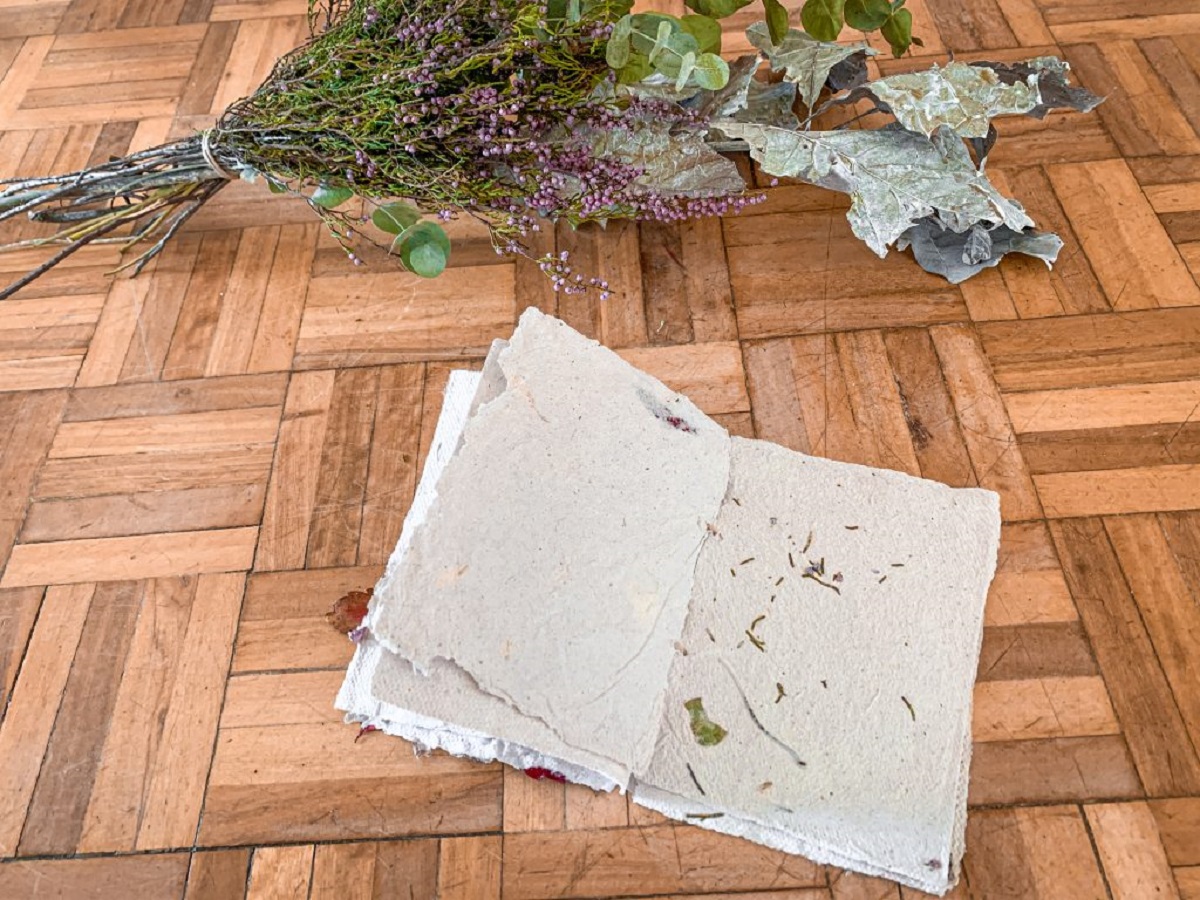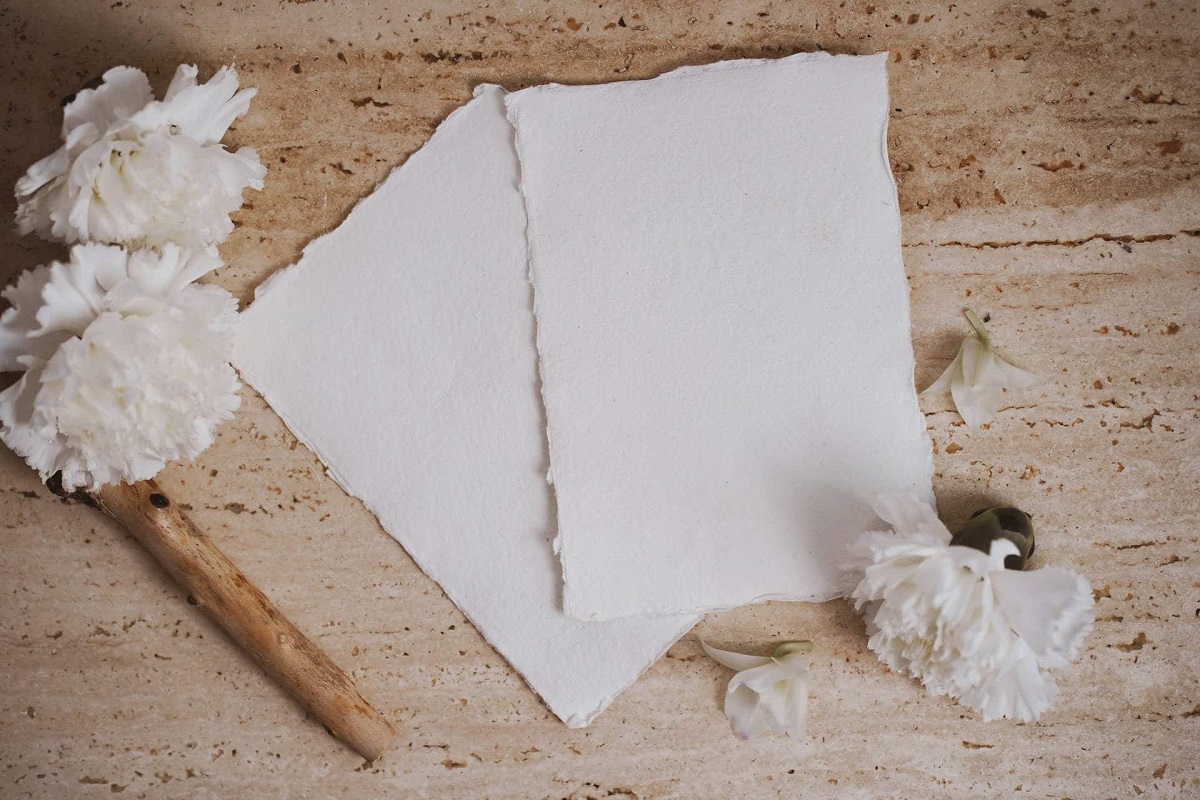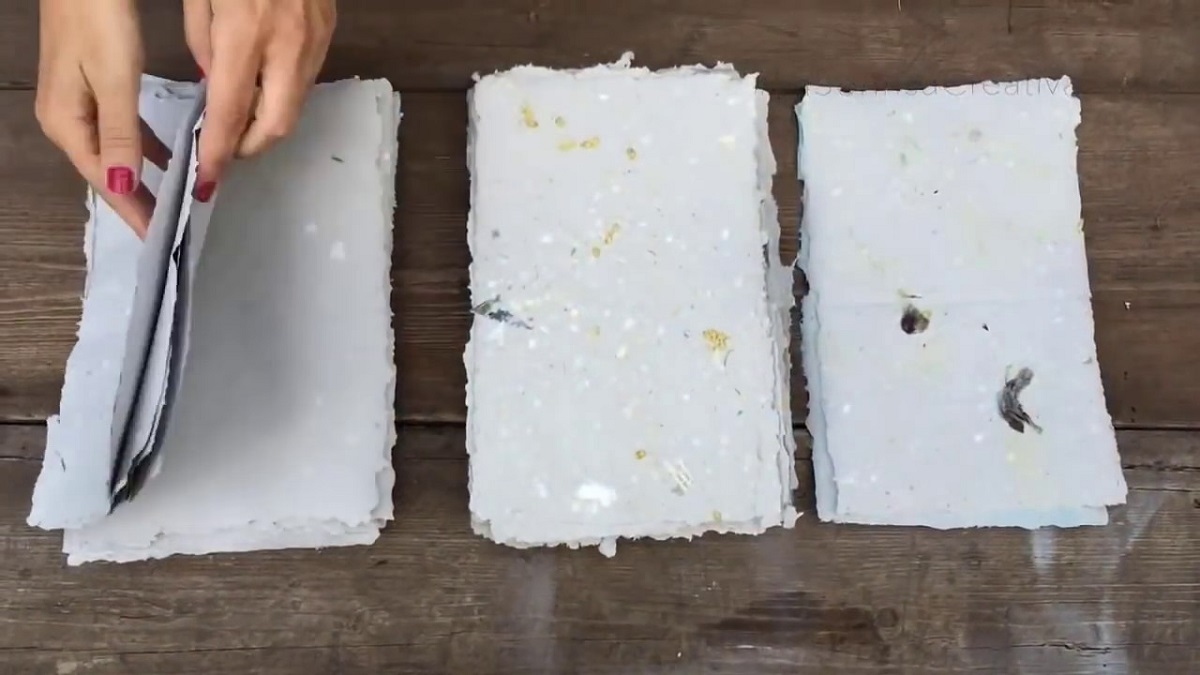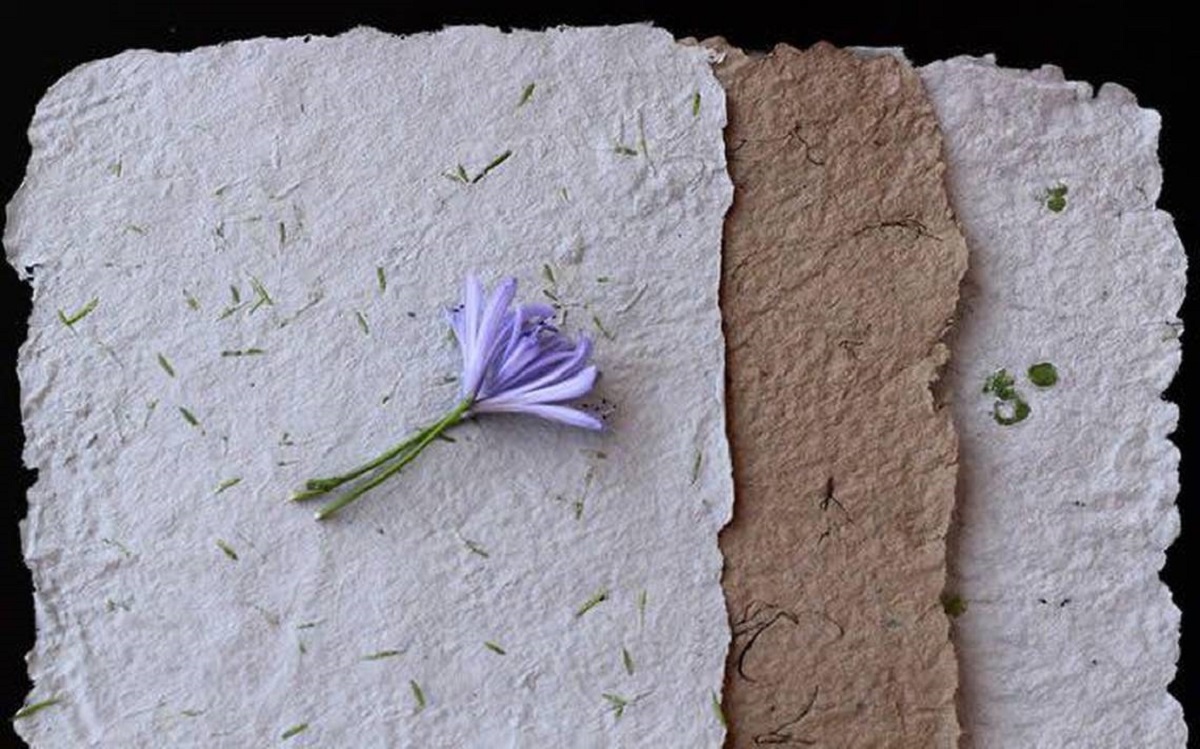
Recycling paper along with the use of recycled paper is one of the easiest and most beneficial options to reduce waste and environmental impact from excessive use of resources. If you are aware of this, you can recycle and store your paper in containers enabled for this product, but if you want to go one step further, we will show you how to make homemade recycled paper it will be ready to use.
In this article we are going to tell you what are the main guidelines to learn how to make homemade recycled paper and what are the materials that we are going to need.
How to make homemade recycled paper

You can use this handmade recycled paper to make different crafts, stencils, calendars, paper dividers, keepsakes, boxes, packaging, bags, simple appliqué decorations, notebooks, journals, unique and special gifts. The material from which recycled paper is made.
To make recycled paper, you will need the following materials:
- 2 identical photo frames.
- Fiberglass mesh or rolls.
- A plastic container in which the frame is mounted horizontally.
- An old sheet that can be cut.
- Reusable paper (newspaper won't give you good recycled paper).
- A spray bottle.
- A hand press or something that allows you to squeeze the paper and get the water out.
- Mortar or blender to shred paper.
- A sponge.
- Scotch tape.
- Nails and staplers.
Steps to learn how to make homemade recycled paper

Step 1:
The first step is to place one of the frames on a bench, face up, and cover it with a piece of mesh of the same size. Make sure the netting covers the entire frame and is taut, then staple it down. Strike the staple with a hammer so the staple sits in place without sticking out. Cut any excess mesh sticking out of the sides of the frame and glue the edges down.
With this, your mold is ready. At the same time, another frame that acts as a cover will not have a mesh. Cut the old paper into pieces large enough to completely cover the frame before moving on to the next step.
Step 2:
The second step is to make the pulp. When making pulp, the paper to be recycled shreds more easily if it is submerged in water for a few hours. Whether you choose this option or not, place the paper in a blender, add water, and continue blending.
You can do this process manually with mortar if you want, but it is more demanding. You get the pulp when the mixture is free of lumps and pieces of paper. Now you have to pour it into the container and add water to cover the two frames (the mold and the lid, which will be placed horizontally inside the container in order).
Step 3:
Moisten one of the old leaves with water before inserting the mold and lid to facilitate pulp transfer. Immediately afterwards, he places the frame in the container, first the mold, which you must place with the mesh up, and then the lid, which must face down.
Shake the frame in the bowl to check that the pulp is evenly distributed. At that moment, lift the frame and you will see how the pulp sticks to the mold. Let it drain for a few seconds, then remove the lid.
Step 4:
Place the mold on the sheet with the part that contains the pulp towards the sheet. Do this very carefully until the mold is set on the board. At this point, use a sponge to press down on the entire mesh to remove some of the moisture. Then, lift the mold. The pulp has to come off to be on the paper.
Step 5:
Before repeating the operation for more sheets, place another sheet of paper on top that you have been working on, and place a press or some other heavy object on top, such as a couple of books.
Leave them on the paper for a few hours, and once you remove them, let the sheet of paper dry completely. This process can take a day. At the same time, you can continue the recycling process, for which you just repeat the operation as many times as possible, and you will definitely get more pulp.
Step 6:
When the leaves and leaves are dry, carefully separate them. Your recycled paper will be a bit wavy, so feel free to place it under a thick book for a few hours. After that, you can start reusing your own paper, thanks to the process which, as you can see, is cheap and easy.
Advantages of learning how to make homemade recycled paper

The advantage of recycled paper is first of all its environmental protection. Paper recycling can reduce or stop deforestation and other consequences of the massive and uncontrolled production of paper.
We can summarize the benefits of recycled paper as follows:
- Energy saving. If paper were made through recycling, we would save around 70% of the energy if manufacturing were done directly from the cellulose of trees.
- Save resources. Almost 70% of the materials required by the cardboard and paper industry can be provided by recycled paper.
- The consumption of raw material is reduced. We are talking about felled trees. It must be borne in mind that for every ton of recycled paper, the wood of a dozen trees is saved. According to the research, the number of trees that could be saved would be much higher.
- Optimize the quality of water, air and the environment in general. The recycling of cellulose, cardboard and paper represents a 74% reduction in polluting emissions into the atmosphere. In the case of water, contamination is reduced by up to 35%.
- The remains will not end up in landfills or incinerators.
- GHG savings (Emissions of greenhouse gases). This is a clear advantage in an era where factors such as climate change are at stake in the future of the planet.
From an economic and environmental point of view, the benefits of recycling paper are relevant for everyone, which is why there is a campaign to convince people that they need to know how, where and why to recycle paper or cardboard.
I hope that with this information you can learn more about how to make homemade recycled paper.